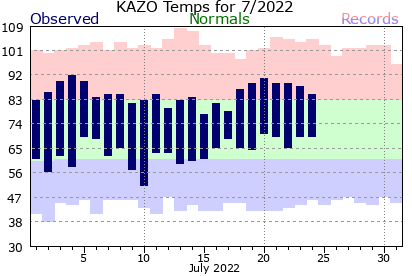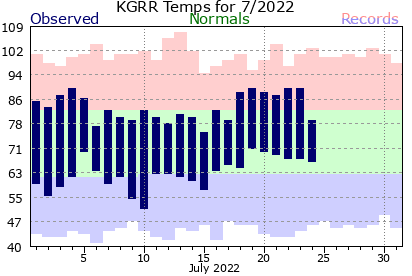West central Michigan small fruit update - July 28, 2022
Blueberry harvest is in full swing under intense heat. Following OSHA and GAPs recommendations helps to prevent heat related illnesses among farmworkers.
Blueberry growers are harvesting mid-season blueberry varieties. Bluecrop in some fields has been already harvested more than twice and machine harvesting is taking care of the remaining berries. This year, we are experiencing very high temperatures during the blueberry harvest. However, this is a national trend for most fruit and vegetable crops harvested at this time. At Michigan State University Extension, we are concerned with all those issues that impact our blueberry industry and the fruit industry in general. Therefore, we would like to transmit the recently released Occupational and Safety and Health Administration (OSHA) recommendations that growers need to consider when field workers are active under extreme heat conditions to prevent heat related illnesses.
Over the past days, temperatures in west Michigan have been very high and under low relative humidity. Over a period of two weeks, maximum daily temperatures remained above the 80s and during some days they reached the low 90s. According to the National Weather Service, temperatures from the past two week are considered record temperatures for this time of the year (Figures 1 and 2). Those conditions affect all physical activities of grower and farmworkers working for long hours exposed to heat and solar irradiation.


Considering these extreme temperatures while working in the field is very important to protect the health of farmworkers, especially those harvesting blueberries. In addition, fruit harvested under these weather conditions tend to be prone to a rapid decay due to the presence of fungi that cause fruit rot during harvest time. So, rapid removal of harvested fruit from the field and immediate cooling helps to preserve the integrity and quality of the fruit.
Regarding the conditions of field work under extreme high temperatures, the OSHA released a series of recommendations on preventing heat illness at work. It is important that field managers and crew leaders take in considerations these recommendations and learn to identify hazardous field working conditions, and to recognize symptoms associated with heat illnesses.
According to OSHA, three out of four fatalities caused by heat illness occur the during the first week of work. In order to prevent heatstroke:
- Workers need a period of acclimatization by taking frequent breaks and working shorter shifts in the heat.
- Follow the 20% rule. On the first day, work no more than 20% of the shift’s duration at full intensity in the heat. Then, increase the duration of time at full intensity by no more than 20% a day until workers are used to working in the heat.
In addition, OSHA recommends observing the following guidelines while doing field work under extreme high temperatures typical of summertime:
- Drink cool water, even if you are not thirsty — at least 1 cup every 20 minutes.
- Take rest breaks. Take enough time to recover from heat given the temperature, humidity and conditions.
- Find shade or a cool area. Take breaks in a designated shady or cool location.
- Dress for the heat. Wear a hat and light colored, loose fitting and breathable clothing if possible.
- Watch out for each other. Monitor yourself and others for signs of heat illness.
- If wearing a face covering, change your face covering if it gets wet or soiled. Verbally check on others frequently.
Symptoms of heat illnesses
Growers and supervisors need to identify some basic symptom of heat illness. These include:
- Heat cramps. These could be the first indications of heat exhaustion of heatstroke. Seek immediate medical attention if cramps last longer than 1 hour.
- Heat exhaustion characterized by heavy sweating, weakness, weak pulse, muscle cramps, dizziness, nausea or vomiting, headache or fainting.
- Heat stroke, which includes confusion, nausea, dizziness, body temperature above 103 F, hot, red, dry or damp skin, rapid and strong pulse, fainting, loss of consciousness.
Heat stroke is a severe medical emergency. Call 911 or get the victim to a hospital immediately. Heat delay can be fatal. Move the victim to a cooler, preferably air-conditioned, environment. Reduce body temperature with cool cloths or bath.
For more information on all of these heat related illnesses, see the Centers for Disease Control and Prevention (CDC) site.



 Print
Print Email
Email
